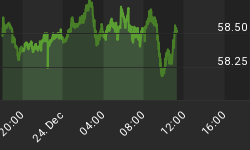Historically, September is the worst month for stocks and the S&P 500 Index could correct to 1660/1640. For now, however, the longer term prospective stays positive in the US.
The US Economy Continues to Show Good Results
The trade balance is improving and could lead to a better than expected Gross Domestic Product in the months ahead. The ISM Non-Manufacturing Index is now at 56, its best number in five years. The ISM Manufacturing hit instead two years high at 55.4. Demand in the auto industry is rising and companies are palling the expand production.
The positive contribution of a balanced housing market is now becoming visible and the deficit is starting to fade. The decline of mortgage bankruptcies will provide the US government with cash inflow, resulting in a smaller budget deficit that will give the Federal Reserve more ability to maneuver. In the fall, Congress will be asked to raise the debt ceiling and approve a new spending bill. This decision could make or break the good performance of the past two years.
The Italian Government Could Break Apart
After almost two years of decline, the economic picture is improving in the Eurozone as well. Confidence is increasing in the peripheral countries, and Germany has shown good numbers during 2013's second quarter. In the United Kingdom, the CIPS service activity index reached 60.2, its highest level since 2006. Nevertheless, data can change from one month to the next. Recovery in the Eurozone area, which represents almost 50% of all British exports, stays weak. Finally, in China, industrial production spiked this year and investment is positive. The Chinese government appears comfortable with the current growth remaining around 7%, considering it still promotes various economic reforms.
The study of seasonal cycles anticipates a correction of stocks to 1660/1640 in the short-term. A deeper decline could be triggered by political uncertainty in some European countries, a deterioration of the economic growth in China, or a premature change of the US monetary policy. For example, the US unemployment rate could decline further. However, since 1945, the long-term unemployment trend has been characterized by three waves up before unemployment declined for a decade. Unemployment began to rise in 2000; it topped in 2003, bottomed in 2007, and completed the second wave in 2009. A third wave up is still lacking, but potentially could be seen by the end of 2014.
















